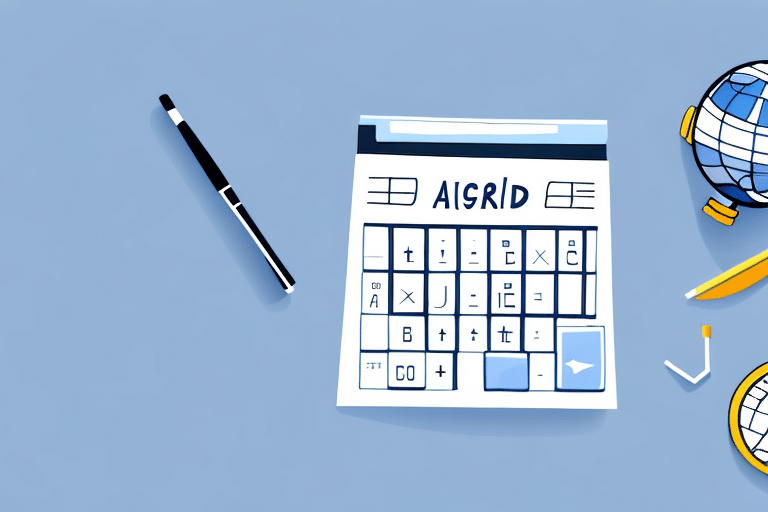Understanding Landed Cost
If you are involved in importing and exporting goods, calculating landed cost is an essential part of your business operations. Landed cost refers to the total cost of a product once it has reached its final destination, including manufacturing, shipping, customs duties, insurance, and any other associated fees. Accurate landed cost calculation is crucial for making informed business decisions, optimizing profitability, and staying competitive in today's global economy.
Definition and Components of Landed Cost
Landed cost encompasses several components that contribute to the total expense of importing goods:
- Manufacturing Costs: Includes raw materials, labor, and overhead expenses.
- Transportation Costs: Covers shipping from the manufacturing facility to the destination, including any intermediate stops.
- Customs Duties and Taxes: Fees imposed by the importing country based on the type and value of goods.
- Insurance: Protects goods against loss or damage during transit.
- Other Fees: Includes handling charges, warehousing, and administrative costs.
Importance for Your Business
Calculating landed cost is vital for several reasons:
- Pricing Decisions: Understanding the true cost allows you to set competitive prices while maintaining profit margins.
- Cost Reduction: Identifying areas to reduce costs, such as negotiating better shipping rates or streamlining customs processes.
- Compliance: Ensures you pay the correct amount of taxes and duties, avoiding legal issues and fines.
- Financial Forecasting: Accurate cost calculations aid in predicting cash flow and planning for financial challenges.
- Product Profitability: Helps identify the most profitable products in your inventory by comparing their landed costs.
According to the U.S. Customs and Border Protection, accurate landed cost calculations can improve a company's profit margins by up to 15% by identifying hidden costs and optimizing supply chain processes.
Calculating Landed Cost
Determining Cost of Goods Sold (COGS)
The foundation of landed cost calculation is determining the Cost of Goods Sold (COGS). This includes all expenses related to the production of goods, such as raw materials, labor, and overhead costs. Accurate COGS calculations ensure that subsequent landed cost components are precisely accounted for.
For instance, if manufacturing costs are underestimated, it can lead to pricing errors and reduced profitability. Utilizing accounting software to track COGS can enhance accuracy and efficiency.
Types of Landed Costs
Landed costs can be categorized into various types:
- One-Time Charges: Fees like customs duties and import taxes.
- Recurring Expenses: Ongoing costs such as warehousing and transportation fees.
- Insurance Costs: Premiums paid to protect goods during transit.
- Indirect Costs: Expenses related to regulatory compliance and potential delays.
Understanding these types helps in creating a comprehensive landed cost model, ensuring no hidden expenses affect your bottom line.
Factoring in Overhead Expenses
Overhead expenses, including rent, utilities, and employee salaries, also impact landed cost. These can be allocated across products based on factors like volume or weight. Accurate overhead allocation is essential to maintain realistic pricing strategies.
Implementing a cost accounting system can aid in tracking and distributing overhead expenses effectively.
Key Factors Affecting Landed Cost
Freight Costs
Freight costs, including shipping and handling fees, significantly influence landed cost. Factors affecting freight costs include the distance between the manufacturing facility and the destination, mode of transportation, and carrier rates.
Optimizing packaging to reduce size and weight can lead to lower shipping rates. According to a report by Global Trade Magazine, efficient packaging can reduce freight costs by up to 10%.
Customs and Duties
Customs duties are taxes imposed on imported goods, varying based on product type and country of origin. Understanding the tariff classification and applicable rates is crucial for accurate landed cost calculations.
Resources like the U.S. Trade Representative provide detailed information on tariffs and trade agreements that can affect duty rates.
Exchange Rates
Exchange rate fluctuations can impact the landed cost of imported goods. When the currency of the exporting country strengthens against your local currency, the cost of goods increases.
Implementing hedging strategies, such as forward contracts, can mitigate the risks associated with currency volatility. The Investopedia offers comprehensive guides on various hedging techniques.
Optimizing Landed Cost
Negotiating Shipping Rates
Negotiating favorable shipping rates with carriers is a key strategy to reduce landed costs. Volume discounts, long-term contracts, and flexible shipping schedules can lead to significant savings.
Consolidating shipments to achieve higher volume can also attract better rates. For example, combining multiple smaller shipments into one larger shipment often results in lower per-unit shipping costs.
Using Technology
Technology plays a vital role in streamlining landed cost calculations. Modern software solutions offer features such as automated cost tracking, integration with accounting systems, and real-time data analysis.
Tools like Flexport and TradeGecko provide platforms for managing and optimizing supply chain operations, leading to more accurate landed cost calculations.
Best Practices and Common Mistakes
Best Practices for Accuracy
- Maintain Up-to-Date Records: Regularly update all cost components to reflect current prices and rates.
- Standardize Calculation Methods: Use consistent methods to ensure comparability and reliability of data.
- Regularly Review Data: Analyze landed cost data periodically to identify trends and areas for improvement.
- Use Reliable Sources: Reference authoritative sources for tariffs, duties, and exchange rates.
Common Mistakes to Avoid
- Ignoring Hidden Costs: Overlooking expenses like administrative fees or compliance costs can distort landed cost calculations.
- Inaccurate COGS: Underestimating the cost of goods sold leads to flawed pricing strategies.
- Not Updating Records: Failing to keep records current can result in outdated and inaccurate cost calculations.
- Lack of Standardization: Inconsistent calculation methods make it difficult to compare and analyze costs effectively.
Real-World Examples and Conclusion
Case Studies
Examining real-world case studies can provide valuable insights into effective landed cost calculation:
- Company A: By implementing automated cost tracking software, Company A reduced landed cost calculation errors by 20%, leading to more accurate pricing and increased profit margins.
- Company B: Negotiating bulk shipping rates and optimizing packaging allowed Company B to decrease shipping costs by 15%, enhancing overall profitability.
These examples demonstrate the tangible benefits of precise landed cost management in real business scenarios.
Conclusion
Accurate landed cost calculation is essential for making informed business decisions, optimizing profitability, and complying with regulations. By adhering to best practices, leveraging technology, and avoiding common pitfalls, businesses can ensure their landed cost calculations are precise and informative. This, in turn, supports sustainable growth and competitiveness in the global market.






















